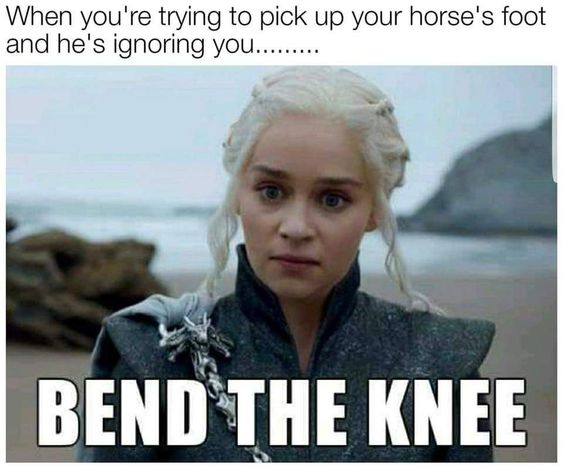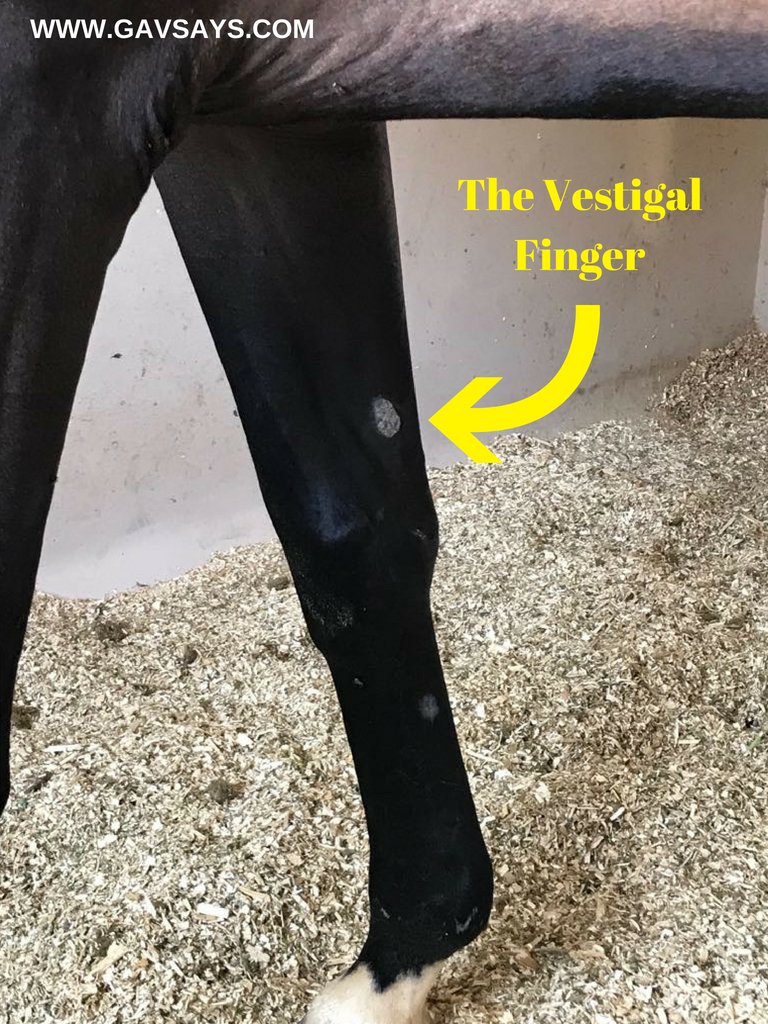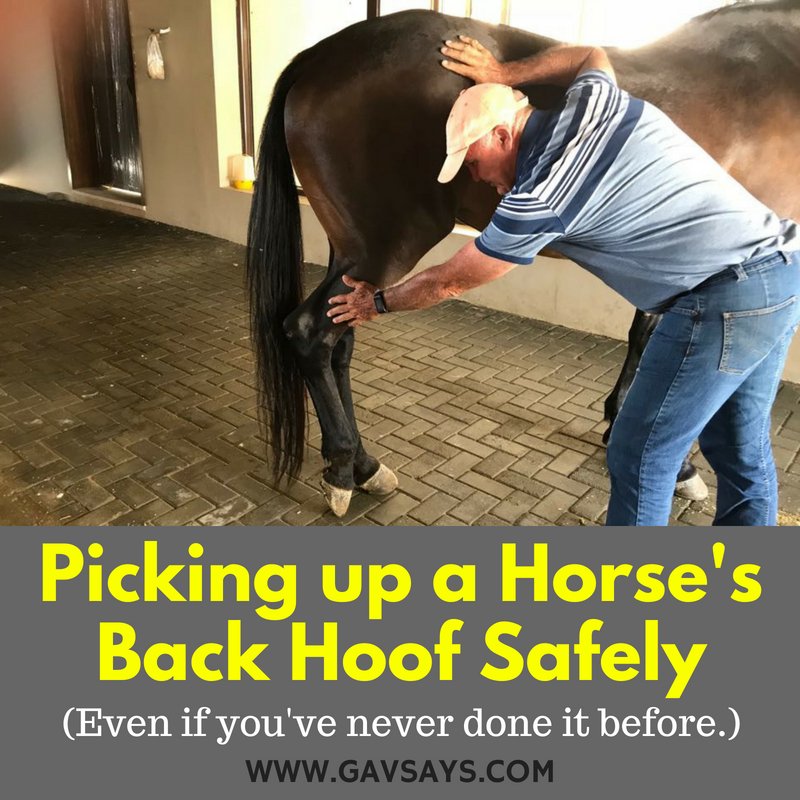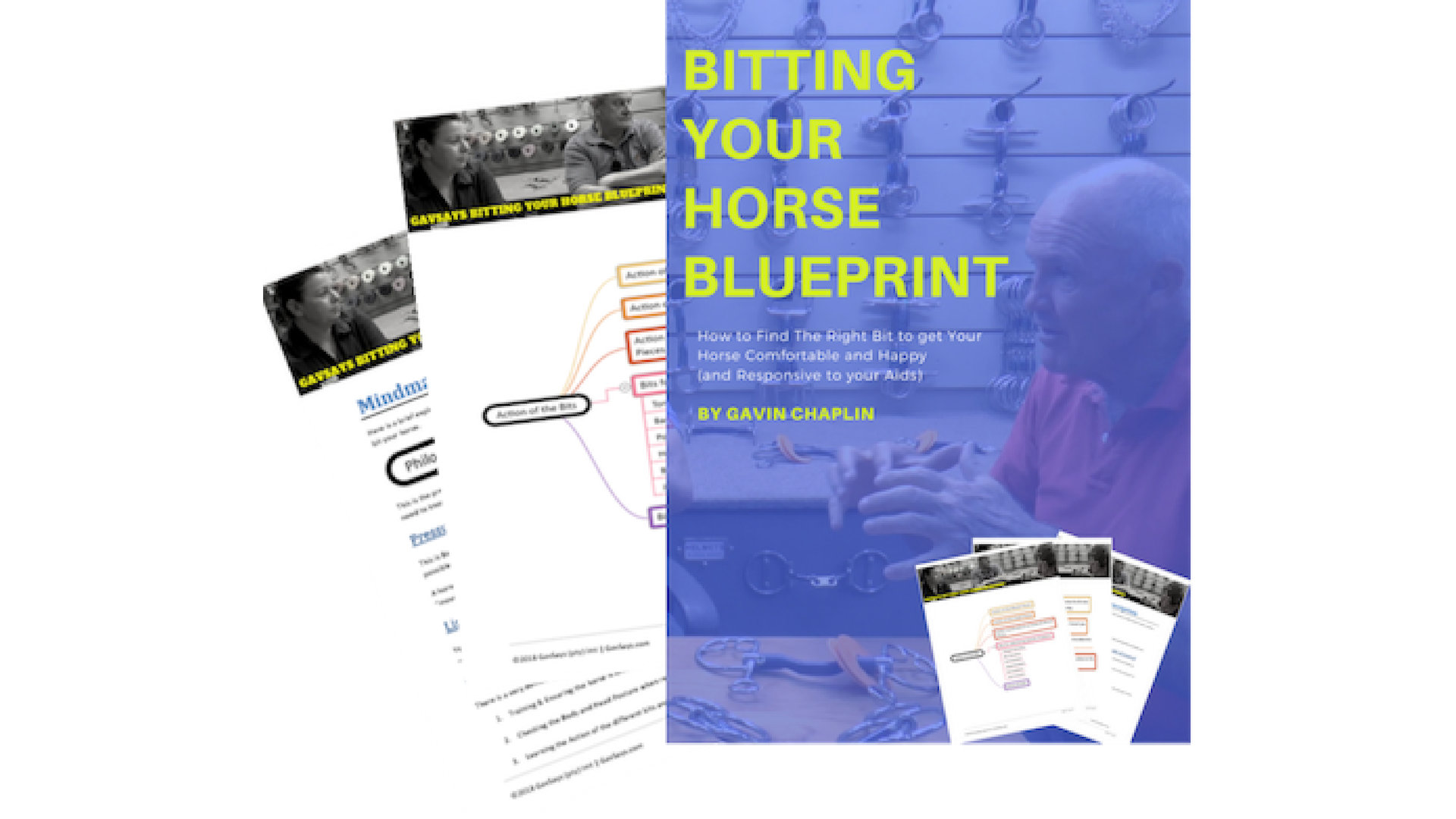Picking up a Horse's Hoof Safely
(even if you've never done it before)
Learn the best methods for picking up a Horse's hoof...
For both the Front and the Back Legs
The other day I was watching Rob trying to pick a horse's foot up.
He wanted to do the simple task of "picking clean" the hoof.
And to do that he needed to do that "simple" task of lifting the foot up. You know…
- Just bend down,
- Grasp the leg,
- Flex it and viola….
You've picked the foot up.
Yeah... in an ideal world.
As I’m sure you've experienced...
Some horses are just not interested in "letting" you pick their feet up.
I often see horse owners and minders really struggle to make it the simple exercise that one thinks it should be. Because the horse has some say in whether it will allow this to be a simple exercise.
The horse is heavier and stronger than you. And they often perversely seem to put their weight onto the leg you are trying to bend, to be able to pick up the foot.
This of course is especially true of the front feet.
You then see the unfortunate person tasked with this job, trying various strenuous methods to get this unhelpful equine just to pick up its foot.
And that was just the case here....
I watched Rob struggle for a couple of minutes and then thought I'd better go over and give him some pointers of how to get the job done…
And how to train the horse so that she lets him do it, whenever he wants to.
And that's exactly what I'm going to teach you today…
We'll chat a bit about both...
- The pitfalls that people fall into when they pick up the feet,
- And an easier way of accomplishing the task.
Let me say at the outset that I am not including in this chat...
Horses that have dangerous habits which need a much higher level of skill to deal with to avoid being injured.
I am talking about how to get that horse that has you completely sussed out.
The horse that simply makes it as difficult as possible for you just to pick up a foot.
Let's Start With the Front Feet:
I am going to give 3 Methods you could use - with the 3rd method being my method of choice.
But before we get there...
The first mistake I see so many people make:
Is to hold the leg at the fetlock and try to lift the horse's foot using brute strength.
Essentially to pick up the foot and try at the same time to shift the horses weight onto the other front foot by pushing their shoulder into the horses shoulder, in an effort to make it move its weight onto the other leg, to make it possible to lift the foot on their side.
A few points to take note of here that makes this method difficult:
- A horse is an "into-pressure" animal by instinct: So if you push it, its instinctive reaction is to push back. Not a good result for you if you are trying to pick up the foot using the method described above.
- Even if you get the horse to shift its weight onto the other side: It can still resist you by making it difficult to flex the knee.
Before suggesting some different methods to make it easier for you to get the job done...
Let's make the assumption that you are working with the horse's right front foot.
(When working working with other leg simply swap the tips below around.)
Method #1:
The first method involves...
Squeezing the little chestnut sized piece of "what looks like a patch of dried skin," on the inside of the horses front leg, just above the knee.
This will make the horse flex the leg to get away from a certain amount of uncomfortable irritation, that squeezing this patch of skin causes.
(Be aware that this little patch of dried looking skin is actually a vestigial finger.)
As the horse bends the leg to move, one can then catch the fetlock as the horse picks up the foot.
1) If one is using this technique then one would stand opposite the horse's right shoulder facing backwards.
2) Bend forwards slightly enabling your right hand to slide down the back of the horse's right leg.
3) Then slide it to the inside of the leg, until you can grasp the chestnut between thumb and forefinger.
4) Once you have grasped the Vestigal Finger, squeeze it and at the same time turn your wrist as if you were unscrewing a bottle top, to make the squeeze more effective.
5) And then... Keep you left hand extended down the leg in readiness to grasp and cup the underside of the fetlock as the horse lifts its foot.
Method #2:
The second method would be with the help and use of something like the Hoof Pick...
1) Stand facing the horse's shoulder.
Stand slightly further from the horse: At a distance that allows you to have your head next to the shoulder when you bend down.
2) Now grip the end of your hoof pick so that the handle end protrudes from your right hand.
(If you are using a hoof knife then grip it by the flat of the blade, again with the handle protruding from your right hand.)
3) Again have you left hand ready to the cup the underside of the fetlock when the horse lifts its leg.
4) Now tap the horse with the flat side of either of the handles on the front of the cannon bone (the long bone that connects the knee to the fetlock), just hard enough to make it move the leg.
5) As I have said, cup the fetlock as it moves its leg.
Once you have done this a few times you will be able to just flick the horse on the front of the cannon bone with the forefinger of your right hand, and this will be enough to make it pick up its foot.
The difficulty of using this method is...
That to start with, the horse will often be taken by surprise and react with fright the first time you do this.
It will often just jerk the foot away and stamp it back on the ground the first few times. But one can then soften the tap till the horse understands that you want it to just pick the foot up.
Be sure that you anticipate this and have your feet clear so you don't get stamped on.
One can then persevere by touching the bone more gently each time, which will elicit a milder response from the horse, giving you time to catch the fetlock.
It is often helpful to...
- Catch the fetlock,
- Hold the foot off the ground a few seconds,
- And then replace the foot on the ground,
- And repeat the process a number of times until...
The horse will lift the foot quietly to a light touch on the bone, and then just to a touch of your left hand on the fetlock instead of the initial tap on the bone.
The downside of using these two methods...
Is that they both involve a level of discomfort for the horse. So it always associates picking up the foot with that discomfort.
This will in some small way always make it resistant to picking up its foot.
Method #3 – MY METHOD of CHOICE:
My method of choice to pick up the front feet is the following...
1) Stand just in front of the horse's shoulder facing backwards, in a position that allows you to bend slightly forwards and place your right hand on the front of the shoulder or chest.
2) Now cup your hand so that your four fingers protrude slightly. Push hard enough on the chest to make the horse move backwards.
As it steps backwards it will automatically have to bend its knee and pick up its foot to step backwards.
3) As it bends the leg, (remember you are already bending slightly forwards with your left harm hanging in-front of the leg)...
Slide your left hand down the leg, round the bent knee and cup the cannon bone, anchoring the foot in the air.
4) One can then move to the side of the horse and move your hand to the fetlock, and you have achieved your objective with no discomfort to the horse.
A Few More Ideas & Tips That You Might Find Helpful:
Tip 1: Don't Teach the Horse the Wrong Thing...
Once you have the foot off the ground, horses will often test you by pulling the foot forwards to try to get it out your grasp, so that they can put it back on the ground.
If you allow this you are teaching the horse to make it difficult for you.
If they are doing this, stand with your bent right leg in front of the horse's leg with your knee against the horse's knee, keeping your foot back out of harm's way.
Work in this way where you can use your leg to restrain the horse, until it un-learns that bad habit of trying to snatch its foot away.
Tip 2: Frequently put the Foot Back Down...
Remember to put the foot back on the ground at frequent intervals to let the horse relax and get some respite from standing on one leg.
Do this before the horse starts to fight you.
Because if you wait until the horse is fighting you to get relief and then you put the foot down, you are teaching it to do that, and it then starts to do it all the time.
Tip 3: Check for Pain...
If a horse consistently fights you to pick up a specific foot, it might be that it has pain in the opposite foot, shoulder or leg.
It might also come from a back or neck that is slightly out and causing pain.
Check it out!
Tip 4: Get More Assertive...
If all has been checked...
Then get a little more assertive with picking up the foot.
If you are doing this, it will help if you pick up the foot and place it back on the ground almost instantly, before the horse reacts. Keep doing this a number of times, making the interval the foot is in the air, slightly longer each time.
They often get over the habit quite quickly if you approach the cure in this way.
Tip 5: Make sure it's not you...
Lastly, be sure that the problem isn't stemming from you.
Horses are so intuitive:
If you had a fight with a family member/friend etc and you are grumpy and in a bad mood.... If you are in a hurry and impatient… ETC, ETC, ETC.
You will find that horses seem to react to that, and display bad habits in whatever you are doing with them.
I use it as a great barometer for how I am going about my day, and I try to fix me, before I try to fix my horse.
Right, Now To The Back Legs:
Working with the back feet is always a little scarier, so let’s begin by giving you some tips that will keep you safe.
Again, we are going to assume we are working with the horse's right back leg.
Firstly...
Let's also assume that you don't know the horse, and you are not sure whether it is used to having its back feet handled.
If this is a young horse that has not been handled much...
Then you will see that the handler will use something like a whip to touch and rub the horse all over the rump.
Then gradually move down the leg, rubbing as he goes until the horse is used to something rubbing its back leg...
This is done before using the technique I am going to describe.
Tip 1:
My suggestion is that you start by leaning forwards and rubbing the horse all over its butt, working down until you are near the level of the hocks.
If the horse shows any kind of adverse behavior then...
Tip 2:
1) Get a lead rope from a head collar and then...
2) Facing backwards and far enough in front of the back leg that the horse can't reach you with its foot - place you right hand against the horse’s hip bone, so that if it tries to swivel its butt toward you, you can push it away or push yourself away from the horse.
3) Now hold one end of the lead rope in your left hand and reach towards the back of the horse...
- Keeping your legs out of harm's way,
- Bending forward from the waist,
- And extending your left arm towards the back of the horse.
4) Then try and flick the free end of the rope round the horse’s leg above the hocks, so that the end of the rope now lies near your feet.
(With the rope going between the horse's legs.)
5) Quietly lean down and grasp this end of the rope in your right hand. Then transfer it to your left hand so that both ends are now grasped in your left hand.
6) Place your right hand back onto the hip bone.
7) Now gently try and wriggle the rope down the back of the leg until it lies in the hollow below the fetlock and above the hoof.
This is known as the pastern.
8) Now, keeping your right hand on the hip to keep the horse away from you, pull quietly back and up towards your belt buckle.
9) If the horse lifts its leg easily, then let the tension slowly out of the rope so the horse can replace its foot on the ground.
10) Repeat a number of times.
If the horse will do this easily...
Then you can progress to picking up the foot by hand.
However if the horse is afraid, it might take a little more perseverance to get this right.
Last tip (3):
If the horse lashes out - then just drop one end of the rope free and start again.
They soon get the idea.
Right let's show you how to pick up the back feet...
Picking up the Back Feet:
[Also see the video example below this step-by-step description.]
1) Firstly stand near the horses stomach.
With your left foot slightly in front of your right, lean forwards with your left hand and run your hand...
- from its butt,
- down the leg,
- starting from the rump
- and moving down past its hock.
2) When you reach the fetlock cup it with your hand and pull it towards you, lifting the foot slightly as you do so.
Keep your right hand on the hip bone and your right foot back at the same time.
This will enable you to get out of harm's way the quickest by propelling yourself backwards onto your extended right leg. I.E. towards the horse’s front end, by pushing with the right arm.
3) If all is quiet and controlled at this stage and the horse is not resisting...
Then move your right hand from the hip and pass it inside the horse's leg at the level of the fetlock.
4) Grasp the fetlock from the back with your right hand passing round the leg from the inside.
5) Now place the palm of your left hand on front of the horse’s hoof and bend it backwards. The leg is now supported in the air by both your left and right hands.
6) Lift the foot slightly and start moving towards the back of the horse.
You will be moving a little bit crab-wise with your left foot still in-front of your right. This will allow you to swivel your right hip backwards quickly, moving you away from the horse and out of harm's way if there is a problem.
7) Move your feet forwards as described above until your right leg catches up to your hands.
At this point the horse's hoof will now be resting on your right thigh and you can now walk the leg backwards supporting it with both hands and your right leg.
This will also keep you safest as you can keep hold of the foot for that fraction of a second, allowing you time to swivel out of the way if the horse does lash out.
The above is not to try to frighten you...
It is just a careful method you can use to prevent yourself getting injured, but there are many horses that you will not need to exercise this level of caution with.
Hopefully you own one of those.
Here's a Video Example of How to do This...
As with the front feet, there are some tips that will help you with this:
Tip 1:
Let the horse rest often by putting its foot back on the ground.
Tip 2:
Put down the foot before the horse tries to get free of you.
Tip 3:
If it tries in a half-hearted way to pull its foot from your grasp immediately, then keep a hold and keep the foot on your right thigh till it stops struggling.
Then put the foot down and start again after half a minute or so.
In this way the horse never feels trapped and is more likely to let you keep a hold of its foot.
Tip 4:
Look for injuries in the other leg and also back, neck, etc, if it is struggling to keep a foot off the ground.
And that’s the how-to of picking up a horse’s hoof...
Now it's time to throw the ball back in to your court.
Can you answer the following 2 questions in a comment below…
- What is your number 1 take-away from the above tips?
IE. What above helped you the most. - And what do you most struggle with when handling your horse?
Get involved and let us know.
Till next time.
-Gav






Comments
Got questions, comments or feedback! Then have your say in the box below...